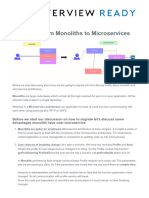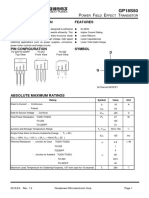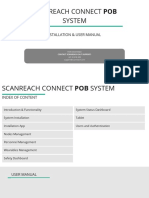0% found this document useful (0 votes)
328 views31 pagesIntroduction To Nginx Slides
This document provides an introduction to NGINX, including what it is used for, its current and desired architectures, layer 4 and layer 7 proxying, TLS termination vs passthrough, timeouts, and an example configuration. NGINX can be used as a web server, reverse proxy, load balancer, and API gateway. It supports both layer 4 TCP proxying and layer 7 HTTP proxying. TLS can be terminated or passed through. The document outlines various timeout settings for client requests and backend connections in NGINX.
Uploaded by
ZuyCopyright
© © All Rights Reserved
We take content rights seriously. If you suspect this is your content, claim it here.
Available Formats
Download as PDF, TXT or read online on Scribd
0% found this document useful (0 votes)
328 views31 pagesIntroduction To Nginx Slides
This document provides an introduction to NGINX, including what it is used for, its current and desired architectures, layer 4 and layer 7 proxying, TLS termination vs passthrough, timeouts, and an example configuration. NGINX can be used as a web server, reverse proxy, load balancer, and API gateway. It supports both layer 4 TCP proxying and layer 7 HTTP proxying. TLS can be terminated or passed through. The document outlines various timeout settings for client requests and backend connections in NGINX.
Uploaded by
ZuyCopyright
© © All Rights Reserved
We take content rights seriously. If you suspect this is your content, claim it here.
Available Formats
Download as PDF, TXT or read online on Scribd
/ 31

























































































